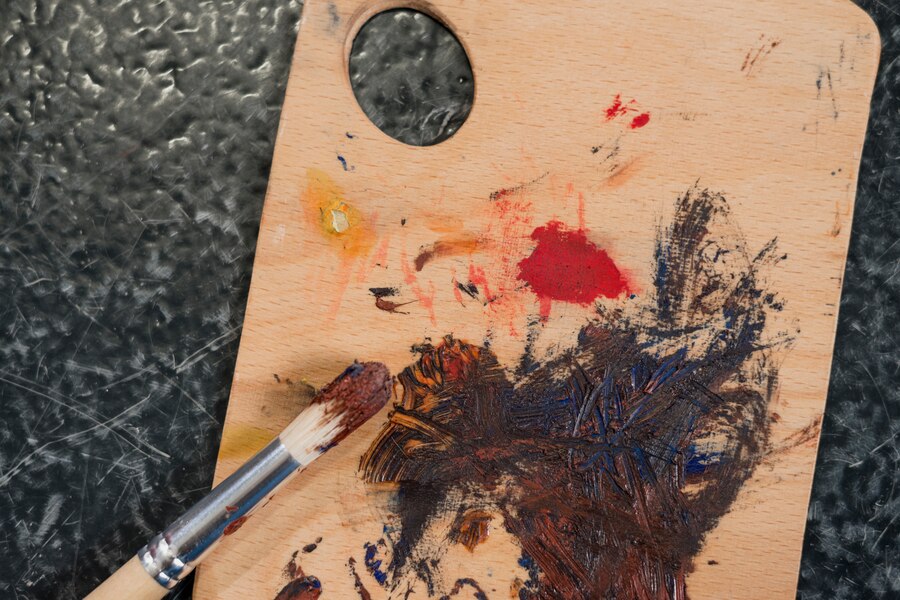
Oil painting is a timeless art form that has captivated artists and audiences for centuries. One of the most challenging yet rewarding aspects of oil painting is achieving realistic textures. Whether it’s the roughness of tree bark, the softness of a petal, or the intricate details of human skin, mastering texture can elevate your artwork to a new level of realism. In this comprehensive guide, we’ll explore various techniques for achieving realistic textures in oil paintings, supported by insights from top art resources and expert advice.
Understanding the Importance of Texture in Oil Paintings
Texture is a fundamental element of visual art that adds depth, dimension, and realism to a painting. It helps convey the tactile qualities of the subject, making it more relatable and engaging for the viewer. For instance, the roughness of a stone wall or the smoothness of glass can evoke emotions and create a sense of presence in the artwork. According to Tate, texture in art can be both physical (actual texture) and visual (implied texture). In oil painting, artists often use a combination of both to achieve lifelike results.
To begin, it’s essential to study your subject closely. Observe how light interacts with different surfaces and how textures change under varying conditions. Resources like Artists Network offer excellent tutorials on observing and replicating textures in oil paintings. By understanding the nuances of your subject, you can better translate them onto the canvas.
Choosing the Right Materials for Textured Oil Paintings
The materials you use play a significant role in achieving realistic textures. High-quality oil paints, brushes, and mediums can make a noticeable difference in the final outcome. For instance, thicker paints are ideal for creating impasto effects, while thinner paints work well for smooth, blended textures. Brands like Winsor & Newton and Gamblin offer a wide range of oil paints and mediums tailored for different techniques.
Brushes are another critical factor. Stiff bristle brushes are perfect for creating rough textures, while soft sable brushes are better for smooth, delicate details. Additionally, palette knives can be used to apply thick layers of paint, adding a three-dimensional quality to your work. For more insights on selecting the right tools, check out this guide by Jackson’s Art.
Layering and Glazing Techniques
Layering is a cornerstone of oil painting that allows artists to build up textures gradually. Start with an underpainting—a monochromatic base layer that establishes the composition and values. Once the underpainting is dry, add subsequent layers to refine the details and textures. This method, known as the fat over lean technique, ensures that each layer adheres properly and prevents cracking over time.
Glazing is another powerful technique for achieving realistic textures. By applying thin, transparent layers of paint over a dry base, you can create depth and luminosity. For example, a glaze of burnt sienna over a dry layer of white can mimic the warmth of human skin. The Old Masters, such as Rembrandt and Vermeer, were masters of glazing, and their works remain a source of inspiration for modern artists.
Impasto: Adding Physical Texture to Your Paintings
Impasto is a technique where paint is applied thickly to create a textured surface that stands out from the canvas. This method is particularly effective for depicting rough surfaces like tree bark, rocks, or fabric folds. Artists like Vincent van Gogh famously used impasto to add energy and movement to their paintings.
To achieve impasto effects, use a palette knife or a stiff brush to apply paint in bold, expressive strokes. You can also mix your paint with a thickening medium like Liquin Impasto to enhance its texture. For a step-by-step guide on mastering impasto, visit Artists & Illustrators.
Dry Brush Technique for Fine Details
The dry brush technique involves using a brush with very little paint to create fine, textured details. This method is ideal for rendering hair, fur, or the delicate veins of a leaf. To achieve this effect, load your brush with a small amount of paint and remove excess by dabbing it on a paper towel. Then, lightly drag the brush over the surface of the canvas, allowing the texture of the canvas to show through.
This technique requires a steady hand and patience, but the results are worth it. For more tips on using the dry brush technique, explore this tutorial by Draw Paint Academy.
Sgraffito: Scratching into the Paint
Sgraffito is a technique where you scratch into the surface of the paint to reveal the layers beneath. This method is perfect for creating intricate patterns, fine lines, or textured effects like wood grain or grass. To try sgraffito, apply a layer of paint and let it dry slightly. Then, use a pointed tool like a palette knife, toothpick, or even the end of a brush to scratch into the surface.
This technique adds a dynamic, tactile quality to your work and can be combined with other methods for even more complex textures. For inspiration, check out this article by Art is Fun.
Using Mediums to Enhance Texture
Mediums are substances added to oil paint to alter its consistency, drying time, or texture. For example, linseed oil can make paint smoother and more fluid, while beeswax can add body and thickness. Experimenting with different mediums can open up new possibilities for texture in your paintings.
One popular medium for texture is cold wax, which can be mixed with oil paint to create a matte, sculptural finish. Another option is Galkyd, a fast-drying medium that enhances the flow and transparency of paint. For a comprehensive guide on using mediums, visit The Virtual Instructor.
Blending and Softening Edges
While texture often involves adding roughness or detail, blending is equally important for achieving realism. Softening edges can create a sense of depth and make textures appear more natural. Use a soft brush or a blending tool to gently smooth transitions between colors and values.
For example, when painting skin, blending can help achieve the subtle gradations of tone that make it look lifelike. For more tips on blending techniques, check out this resource by Creative Bloq.
Observing and Replicating Real-Life Textures
One of the best ways to improve your texture skills is to study real-life textures and practice replicating them. Spend time observing different surfaces—notice how light reflects off smooth objects or how shadows define the ridges of rough textures. Take reference photos or make sketches to guide your painting process.
Websites like Pinterest and Unsplash are excellent sources for high-quality reference images. Additionally, platforms like Skillshare offer courses on observational drawing and painting that can help you hone your skills.
Experimenting with Unconventional Tools
Don’t limit yourself to traditional brushes and palette knives. Experimenting with unconventional tools can lead to unique textures and effects. For example, sponges, combs, or even your fingers can be used to apply or manipulate paint. Textured materials like burlap or lace can also be pressed into wet paint to create interesting patterns.
For more ideas on unconventional tools, explore this article by Artists Network.
Practicing Patience and Persistence
Achieving realistic textures in oil painting is a skill that requires patience and persistence. Don’t be discouraged if your first attempts don’t turn out as expected. Keep practicing, experimenting, and learning from your mistakes. Over time, you’ll develop a deeper understanding of how to manipulate paint to create the textures you envision.
For ongoing inspiration and education, consider joining online art communities like WetCanvas or following tutorials on YouTube.
Conclusion
Mastering realistic textures in oil paintings is a journey that combines technical skill, creativity, and a deep appreciation for the subtleties of the natural world. By understanding the importance of texture, choosing the right materials, and experimenting with various techniques, you can bring your artwork to life in ways that captivate and inspire. Remember, the key to success is practice and a willingness to explore new methods. Happy painting!
For further reading and resources, visit The Metropolitan Museum of Art or explore the extensive archives of Art Renewal Center. These platforms offer a wealth of knowledge and inspiration for artists at all levels.
